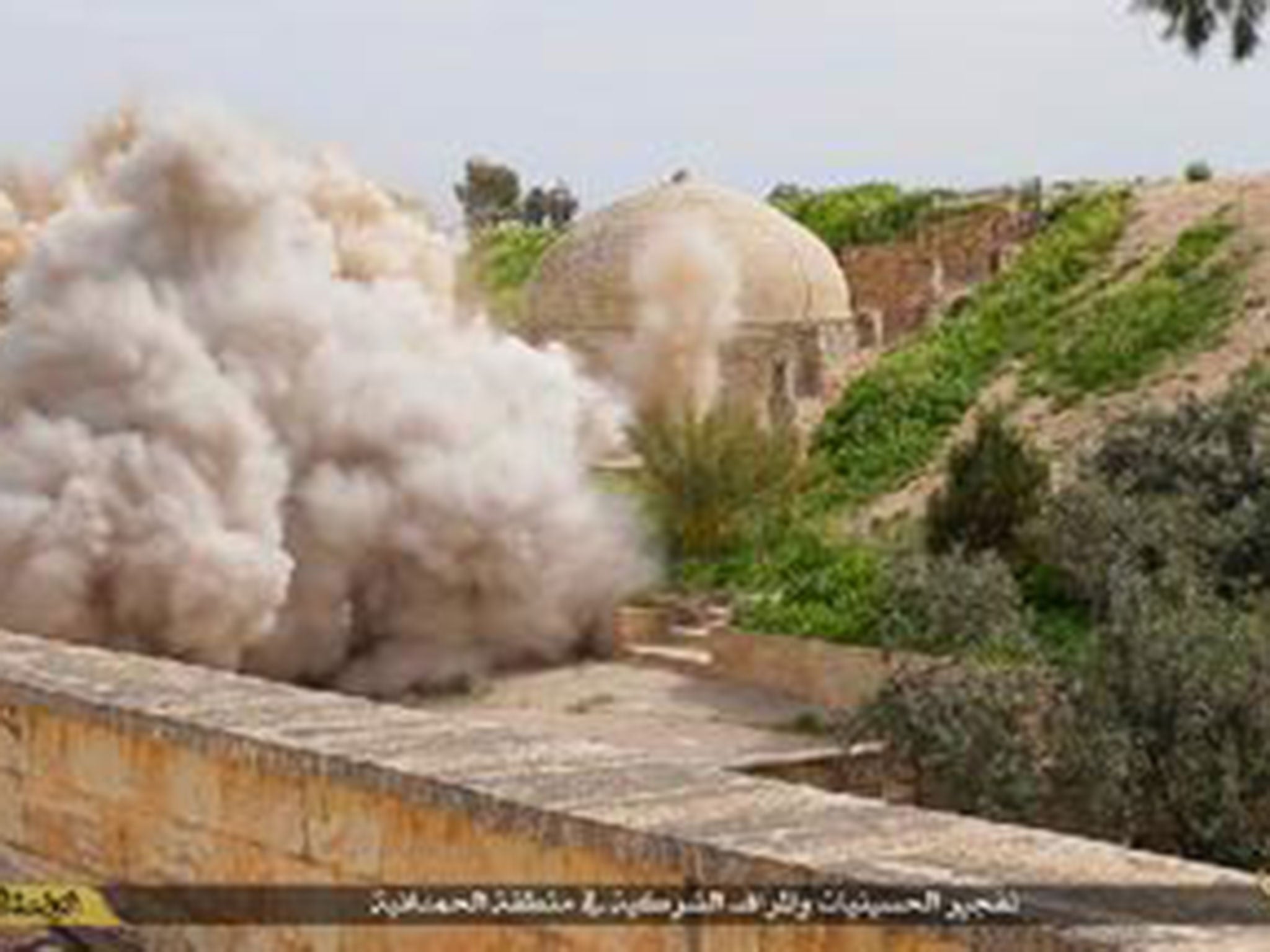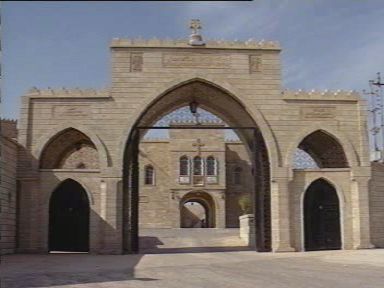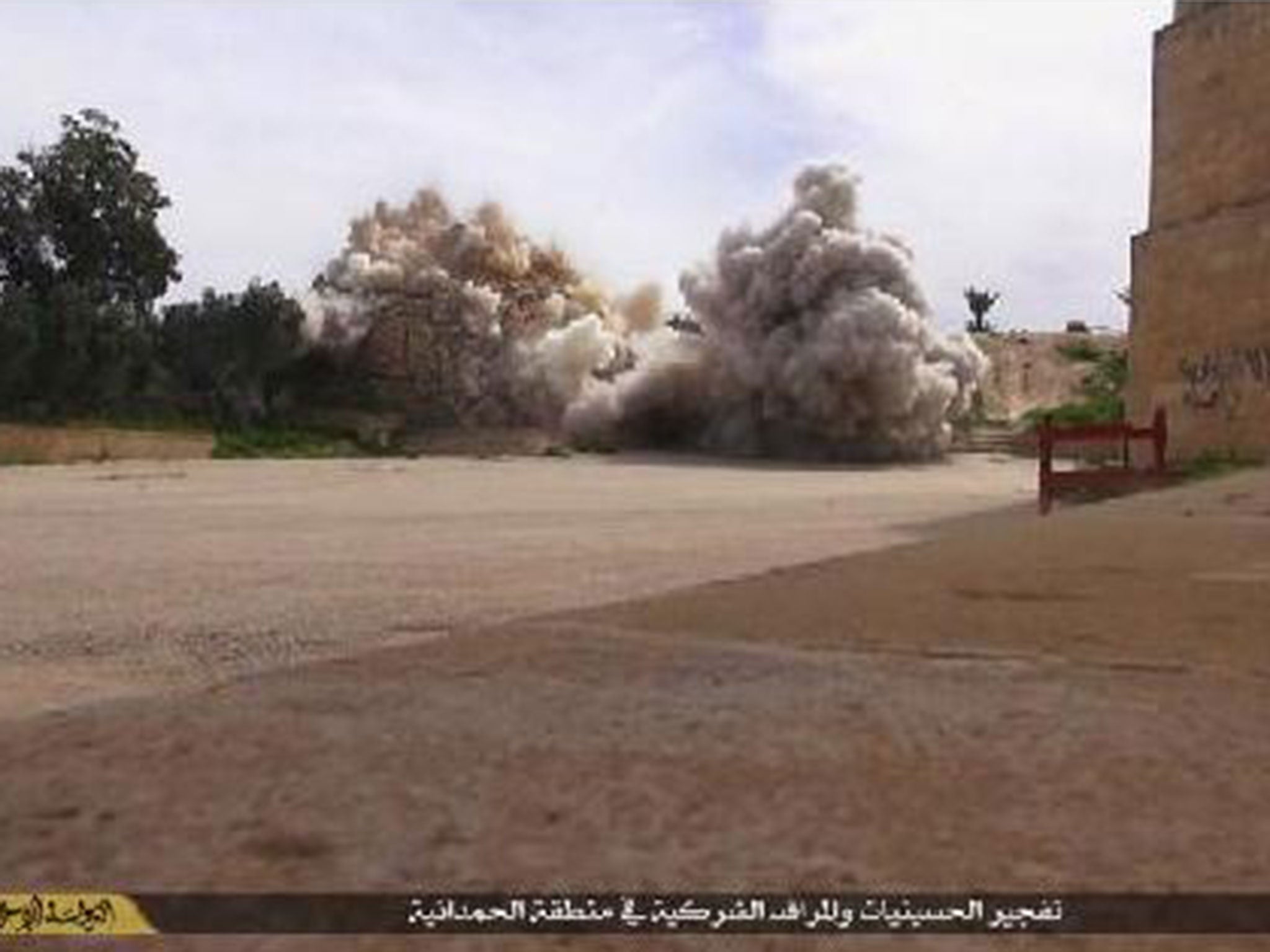Isis militants blow up 4th-century Christian Mar Behnam monastery in Iraq
Groups say this piece of history 'cannot be recreated'

Your support helps us to tell the story
From reproductive rights to climate change to Big Tech, The Independent is on the ground when the story is developing. Whether it's investigating the financials of Elon Musk's pro-Trump PAC or producing our latest documentary, 'The A Word', which shines a light on the American women fighting for reproductive rights, we know how important it is to parse out the facts from the messaging.
At such a critical moment in US history, we need reporters on the ground. Your donation allows us to keep sending journalists to speak to both sides of the story.
The Independent is trusted by Americans across the entire political spectrum. And unlike many other quality news outlets, we choose not to lock Americans out of our reporting and analysis with paywalls. We believe quality journalism should be available to everyone, paid for by those who can afford it.
Your support makes all the difference.Isis militants have reportedly destroyed parts of an ancient Christian monastery dating back to the 4th Century in Iraq.
Militants first seized the Mar Behnam monastery, which is located close to the town of Beth Khdeda, 20 miles south-east of Mosul, shortly after launching their insurgency across northern Iraq in 2014. Reports in June surfaced suggesting fighters had removed crosses from the building and expelled monks, but the building did not appear to have been damaged any further.
It is not known exactly when the recent attacks were carried out. Images purporting to show explosives being detonated around parts of the building were published on Thursday and disseminated by Isis-affiliated accounts.

The historic monastery survived the Nadr Shah attacks between 1743 and 1790 and reportedly holds one of the most valuable Syriac libraries in existence.

The destruction comes after Isis’s media arm published pictures of fighters defacing and vandalising a Christian church and the religious statues within it in Iraq on Tuesday. They were also seen removing crosses and replacing them with Isis flags, in an assault it justified by condemning religious artefacts as idolatrous.
Diana Yaqco, a spokesperson for the Assyrian rights group A Demand for Action, said the monastery was built upon the tomb of Saint Benham and his sister who were converted to Christianity.
She told The Independent: “We are very saddened by this news. Yet again, the terror and the barbarism of Isis strikes a further blow into our hearts. This piece of history cannot be recreated. Isis not only despises our religious beliefs but our literature and arts which really gave so much to the world.”
Ms Yaqco said the news “adds more grief” on top of the on-going hostage situation involving Assyrian Christians who were recently kidnapped by the group near the town of Tal Tamr, in northeastern Syria.
“We are yet to receive more evidence on this from our people on the ground, but it seems concrete,” she added.
Isis has upped its devastating path of destruction significantly in recent weeks. Fighters ransacked Mosul Museum and destroyed centuries-old manuscripts and books in its library, bulldozed the ancient Assyrian city of Nimrud and demolished parts of the Unesco World Heritage City of Hatra.
Join our commenting forum
Join thought-provoking conversations, follow other Independent readers and see their replies
Comments